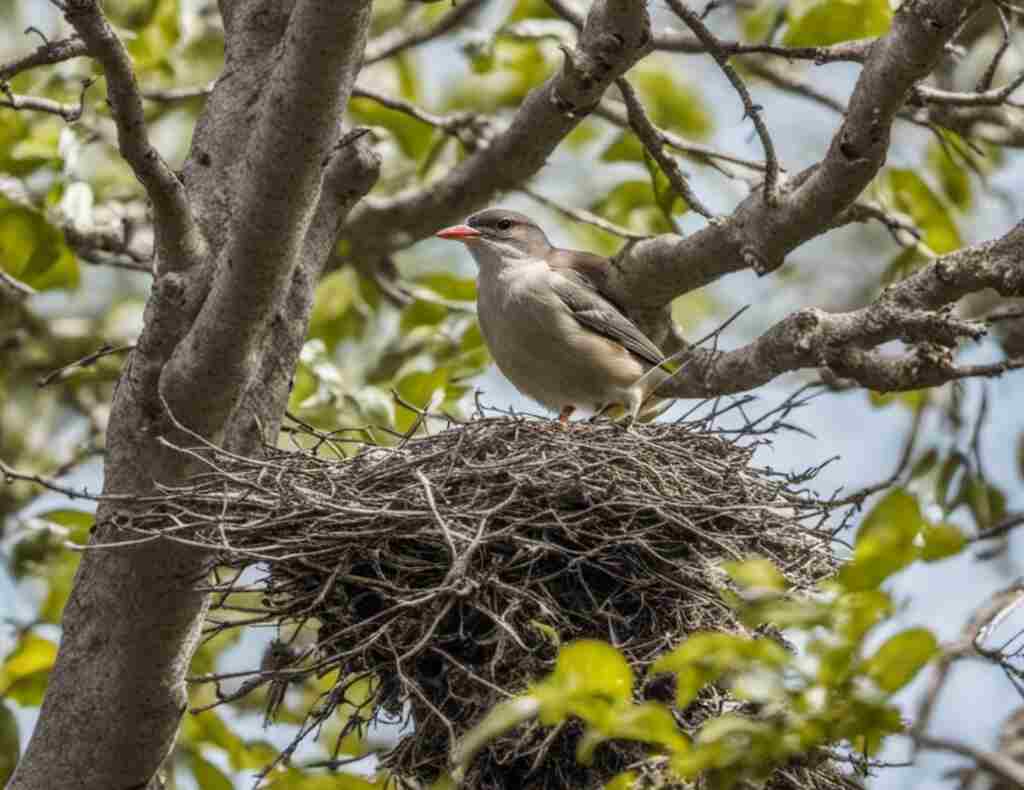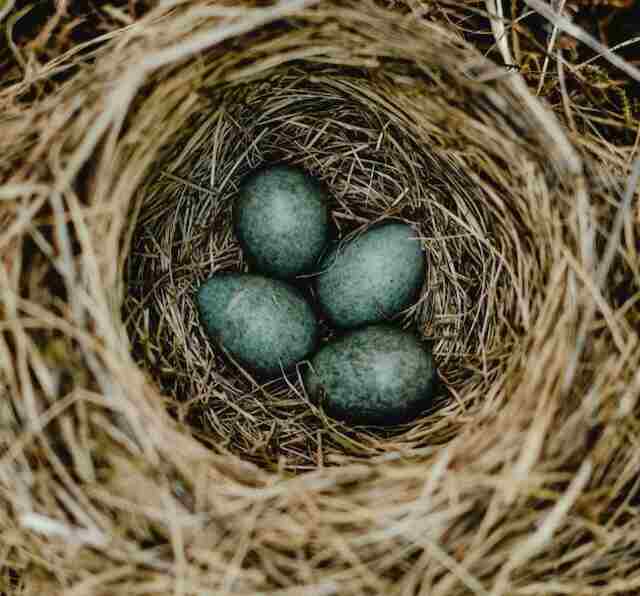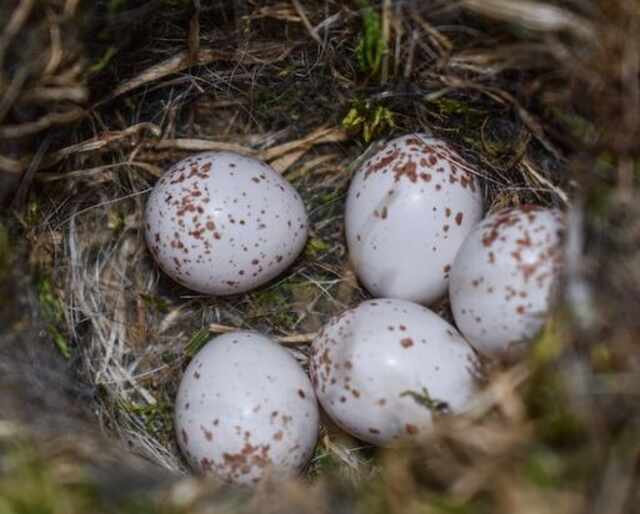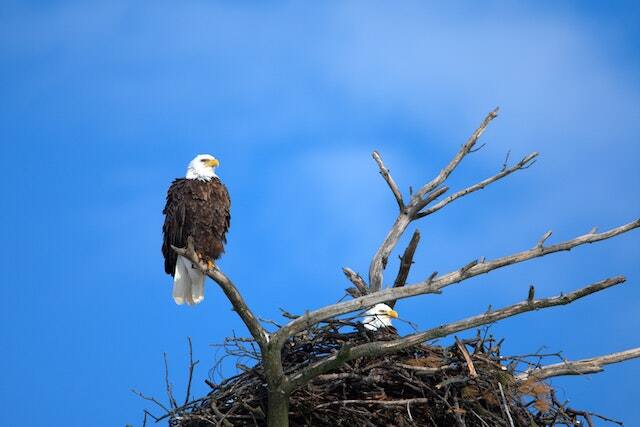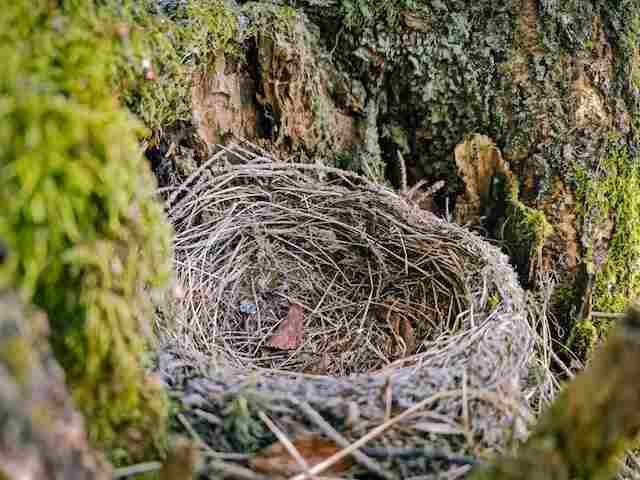Birds have been building nests for millions of years, adapting their construction methods and materials to suit their environments and needs. From simple cup nests to impressive mound nests, the variety of bird nest types is truly remarkable.
In this comprehensive guide, we will take a closer look at the different types of bird nests found in the avian world, exploring the unique designs and structures that birds use to create these amazing structures.
Table of Contents
- 1 Key Takeaways:
- 2 What Are The Different Types Of Birds Nests?
- 3 Cup Nests: Simple and Common
- 4 Platform Nests: Sturdy and Elevated
- 5 Burrow Nests: Hidden and Protective
- 6 Pendant Nests: Hanging Wonders
- 7 Dome Nests: Cozy Structures
- 8 Mound Nests: Impressive Earthworks
- 9 Hanging Basket Nests: Artistic and Functional
- 10 Conclusion
- 11 FAQs: What Are The Different Types Of Birds Nests?
- 12 Author
Key Takeaways:
- There are various types of bird nests, each with their own unique characteristics and construction methods.
- Birds use natural materials such as twigs, grasses, and mud to build their nests.
- Understanding different types of bird nests gives us a deeper appreciation for the ingenuity of these avian architects.
What Are The Different Types Of Birds Nests?
Birds build nests to protect their eggs and young from predators and the elements. There are several different types of bird nests, each designed to suit the specific needs of the bird species that creates it.
Some common types of bird nests include platform nests, cup nests, cavity nests, burrow nests, pendulous nests, dome nests, platform cup nests, and sphere nests.
Platform nests are simple nests made of sticks and twigs, while cup nests are small, cup-shaped nests made of grass, leaves, and other materials.
Cavity nests are built inside tree cavities or holes in walls, while burrow nests are found in the ground or cliffs.
Pendulous nests are hanging nests, while dome nests are large, dome-shaped nests with an entrance tunnel.
Platform cup nests are a combination of platform and cup nests, while sphere nests are round and made of grasses and mosses.
These are just a few examples of the many different types of bird nests that can be found in nature.
Cup Nests: Simple and Common
Birds that build cup nests create structures that are easily recognizable due to their distinctive shape. These nests have a concave shape and are built to hold eggs and protect young birds from the elements. Cup nests are one of the most commonly built types of bird nests.
Birds that construct cup nests use a variety of materials to build them. They may use twigs, grasses, leaves, and even hair or feathers. These materials are woven together to create a sturdy and supportive structure that can hold the weight of the eggs and young birds.
The size and shape of cup nests may vary depending on the species of bird that constructs them. Some birds build shallow cup nests, while others build deeper structures with higher walls. The design of the nest may also be influenced by the location where it is built, with birds adapting their nest to better blend in with their surroundings.
Examples of birds that build cup nests include the American Robin, Eastern Phoebe, and House Finch. These birds are common in North America and can often be observed building their nests in trees, shrubs, and other elevated surfaces like lamp posts and building ledges.
Cup Nests: An Interesting Fact
Did you know that some birds, like the House Sparrow, will build their cup nests in unusual locations, such as in the eaves of buildings or even in abandoned vehicles? These adaptable birds are often found in urban and suburban areas and have learned to use man-made structures as alternative nesting sites.
Platform Nests: Sturdy and Elevated
Platform nests are unique in that they are built on a flat surface or platform, often elevated above the ground. These nests provide stability and protection for the eggs and young birds. Many birds create platform nests on cliffs, trees, or even on human structures like buildings and bridges.
Some species of birds use natural materials like mud, sticks, and grass to create their platform nests, while others use man-made materials like wires and strings. Some examples of birds that build platform nests include eagles, ospreys, and many types of songbirds.
These nests can range in size and shape, with some appearing as simple scrapes on a surface and others as elaborate constructions with built-in walls and roofs. Platform nests are known for their sturdiness and ability to withstand harsh weather conditions.
Examples of Platform Nests:
| Bird Species | Type of Platform Nest | Location |
|---|---|---|
| Osprey | Large Stick Nest | Near Water Sources |
| Common Raven | Basket-Like Nest | Trees or Cliff Faces |
| Bald Eagle | Large Stick Nest with Wall | Near Water Sources |
As seen in the examples, platform nests can come in a variety of styles and be built in a range of locations. The diversity of bird nest structures truly showcases the wide range of adaptations and behaviors displayed by avian species.
Burrow Nests: Hidden and Protective
Burrow nests are fascinating structures built by birds that excavate holes in the ground or take advantage of existing cavities in trees or cliffs. These nests provide excellent protection from predators and the elements, making them a popular choice among many bird species.
The types of nests made by birds that burrow vary greatly, from simple holes in the ground to intricate tunnels that extend for several feet. Some birds, like the burrowing owl, use their sharp talons to dig out a burrow, while others, like the woodpecker, take advantage of existing cavities in trees.
Once the burrow is complete, the birds line it with soft materials like grasses, feathers, and moss, creating a cozy and secure environment for their eggs and young. The size of the burrow and the materials used to create it depend on the size and species of the bird, as well as the availability of materials in the surrounding area.
Adapting to Their Environment
Birds that build burrow nests are highly adaptable creatures, using their ingenuity to construct structures that suit their needs. For example, the burrowing owl will often add droppings or other debris to the entrance of its burrow to deter predators from entering.
The bank swallow, on the other hand, builds a long tunnel-like burrow in muddy cliffs, with several nesting chambers branching off from the main tunnel. These burrows provide excellent protection from predators and harsh weather conditions, making them an ideal nesting spot for these small birds.
A Remarkable Feat
The process of building a burrow nest is a remarkable feat of engineering, requiring a great deal of skill and precision. Birds that build burrow nests must carefully craft the entrances and tunnels, ensuring they are the correct size and shape for their needs.
The birds must also be adept at gathering the materials needed to create their nests, often traveling great distances to find the necessary materials. Despite these challenges, birds continue to build burrow nests year after year, proving that their ingenuity and resourcefulness know no bounds.
Pendant Nests: Hanging Wonders
Pendant nests are a unique type of bird nest that hang or suspend from branches, cliffs, or other structures. These nests are often woven together with materials like grasses, moss, and spider webs, creating an impressive and intricate structure.
One example of a bird species known for its impressive pendant nests is the Baltimore Oriole. These birds use a variety of materials, including grasses, plant fibers, and hair, to create a durable and visually stunning hanging nest. The female oriole weaves the nest together, creating a pouch-like structure that can hang up to 50 feet in the air.
Another bird that builds pendant nests is the weaverbird, found primarily in Africa. These birds create intricate woven nests using long strands of grass and other flexible materials. The male weaverbird uses the nest to attract a mate, and will often build several nests to showcase his building skills.
- Pendant nests are unique in that they hang or suspend from branches, cliffs, or other structures.
- Materials used to make pendant nests include grasses, moss, and spider webs.
- Baltimore Orioles and weaverbirds are two examples of bird species that build impressive pendant nests.
Overall, pendant nests are a testament to the ingenious abilities of birds to create unique and impressive structures. Their hanging design and intricate weaving make these nests both functional and beautiful, adding yet another fascinating element to the world of bird nests.
Dome Nests: Cozy Structures
Dome nests are a type of bird nest that are rounded in shape, providing excellent insulation and protection for the birds inside. These nests are usually constructed using a variety of materials, including twigs, leaves, and mud. The birds that build dome nests are often small, ground-nesting species that need protection from predators and the elements.
The dome shape of these nests is achieved by weaving and molding materials around the bird’s body or creating a structural framework. Some species, like the American Goldfinch, use plant fibers to create a delicate, flexible nest that can expand as the chicks grow. Others, like the House Wren, construct a sturdy dome using twigs and grass.
One of the unique aspects of dome nests is that they often have a small entrance hole, which the birds can enter and exit through. This hole helps to regulate the temperature inside the nest, keeping it warm and cozy for the young chicks.
Examples of Birds that Build Dome Nests
| Bird Species | Nest Characteristics |
|---|---|
| American Goldfinch | Flexible, expandable nest made of plant fibers with small entrance hole. |
| House Wren | Sturdy dome-shaped nest made of twigs and grass with small entrance hole. |
| Black-chinned Hummingbird | Small, cup-shaped nest with a dome constructed of plant fibers and lichen with small entrance hole. |
Dome nests are just one example of the many different types of bird nests found in the avian world. Each nest type illustrates the remarkable architectural abilities of birds and their ability to adapt to their environment. Understanding the various bird nest varieties allows us to appreciate the ingenuity and resourcefulness of these avian architects.
Mound Nests: Impressive Earthworks
Mound nests are a unique type of bird nest that are built on the ground and resemble small mounds or hills. These nests are constructed using a variety of different materials, such as twigs, grass, and leaves, and are often lined with soft materials like feathers or fur to provide a cozy and comfortable environment for the birds inside. Mound nests are built by several bird species, including ducks, plovers, and some species of songbirds.
One remarkable example of a bird species that creates mound nests is the malleefowl, a ground-dwelling bird found in Australia. Malleefowl build large mounds up to three meters wide and one meter high using sand, soil, and plant litter that they collect from the surrounding area.
These earthworks require an incredible amount of effort and energy to construct, but the result is a stable and protective structure that provides an ideal habitat for the eggs and young chicks.
Mound nests are diverse in their design and construction, and each species that builds these nests has its unique adaptations. Some birds even create chimney-like structures within their mounds to help regulate the temperature inside the nest.
These remarkable avian architects demonstrate the diverse and innovative ways in which birds build their homes.
Hanging Basket Nests: Artistic and Functional
Hanging basket nests are some of the most intricate and beautiful bird nests in the avian world. These structures hang from branches and are woven together using a variety of materials, including grasses, moss, and feathers.
Unlike other types of bird nests, hanging basket nests are not built using a specific structure or shape. Instead, they are created by weaving and interlocking materials together until a sturdy and functional basket-like structure is created. This process often results in elaborate and unique designs, making these nests true works of art.
Some birds that are known for building hanging basket nests include the Baltimore Oriole, the Chestnut-breasted Malkoha, and the Baya Weaver. These birds use their exceptional weaving skills to create nests that are both artistic and functional.
Hanging basket nests serve several purposes. They provide safe and sturdy homes for eggs and young birds, while also keeping them out of reach of predators. In addition, these nests can withstand strong winds and harsh weather conditions, ensuring the safety and survival of the birds inside.
Overall, hanging basket nests are a testament to the remarkable abilities of birds and their incredible adaptability. These nests demonstrate the ingenuity and resourcefulness of birds, who have been perfecting their nest-building skills for millions of years.
Conclusion
In conclusion, birds are truly incredible architects and their nests reflect their remarkable abilities. Throughout this guide, we have explored the different types of bird nests, highlighting the various designs and structures that birds use.
From the simple and common cup nests to the artistic and functional hanging basket nests, each type of nest showcases the unique skills and adaptations of different bird species.
By gaining a deeper understanding of the diversity of bird nests, we can appreciate the ingenuity and resourcefulness of these avian architects. Whether they are building burrow nests to protect their young from predators or constructing pendant nests that hang from branches, birds demonstrate incredible engineering and construction abilities.
Explore the Wonders of Bird Nests
If you are interested in exploring the wonders of bird nests, there are plenty of opportunities to learn more. You can observe the nests of different bird species in your local area or through online resources.
By taking the time to appreciate the intricate structures that birds create, we can gain a deeper appreciation for the natural world and the incredible abilities of the creatures that inhabit it. So why not take a moment to marvel at the wonders of bird nests? You might be surprised at what you discover!
FAQs: What Are The Different Types Of Birds Nests?
What are the different types of bird nests?
The different types of bird nests include cup nests, platform nests, burrow nests, pendant nests, dome nests, mound nests, and hanging basket nests.
What are cup nests?
Cup nests are one of the most commonly built types of bird nests. They have a cup-like shape and are typically made from twigs, grasses, and other natural materials.
What are platform nests?
Platform nests are built on a flat surface or platform, often elevated above the ground. They provide stability and protection for the eggs and young birds.
What are burrow nests?
Burrow nests are built by birds that excavate holes in the ground or take advantage of existing cavities in trees or cliffs. They offer excellent protection from predators and the elements.
What are pendant nests?
Pendant nests hang or suspend from branches, cliffs, or other structures. They are often woven together with materials like grasses, moss, and spider webs.
What are dome nests?
Dome nests are rounded structures that provide insulation and protection for the birds. They are usually constructed using twigs, leaves, and mud.
What are mound nests?
Mound nests are built on the ground and resemble small mounds or hills. They are constructed using materials such as twigs, grass, and leaves.
What are hanging basket nests?
Hanging basket nests are intricately woven structures that hang from branches, resembling small baskets. They are made using materials like grasses, moss, and feathers.

